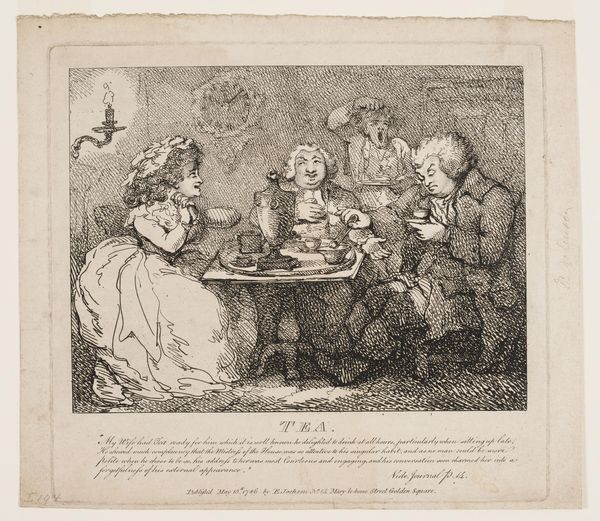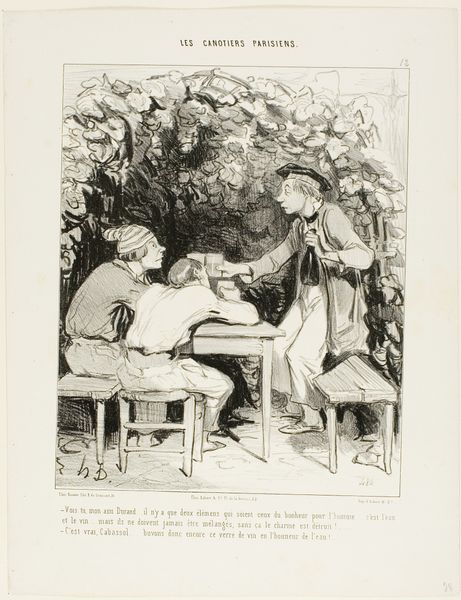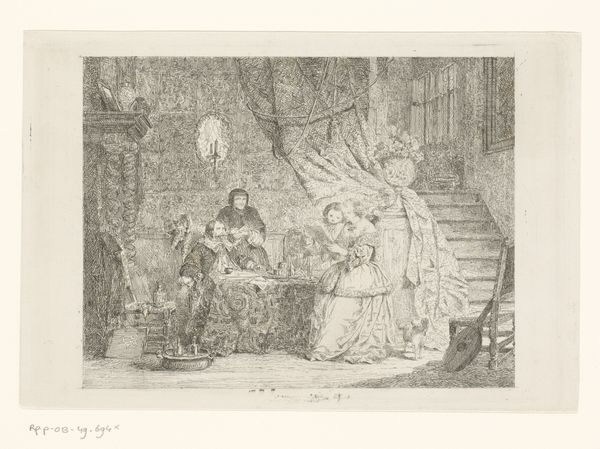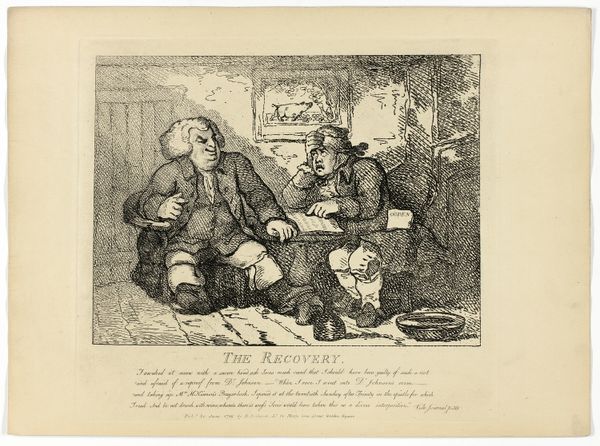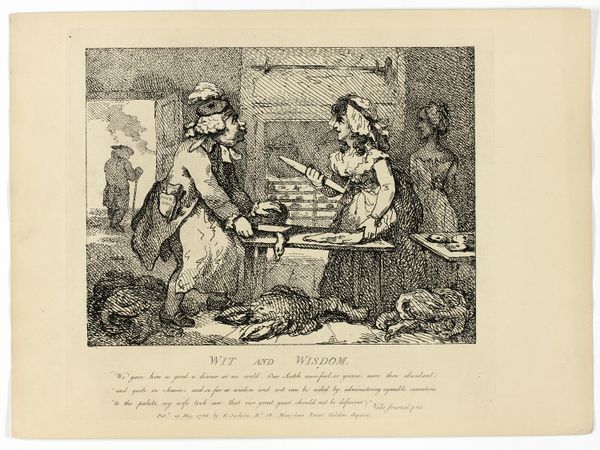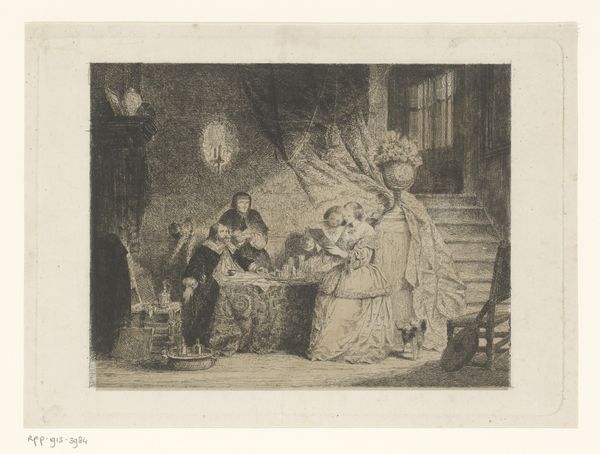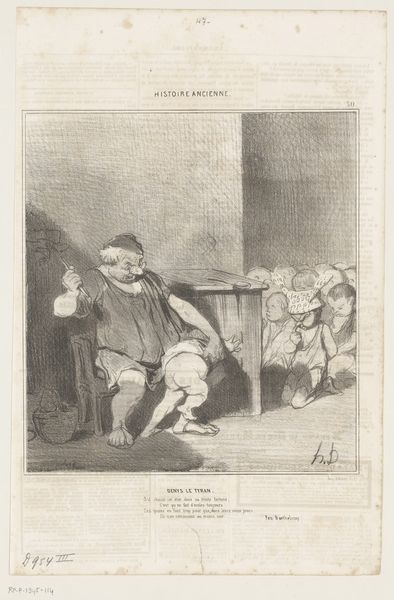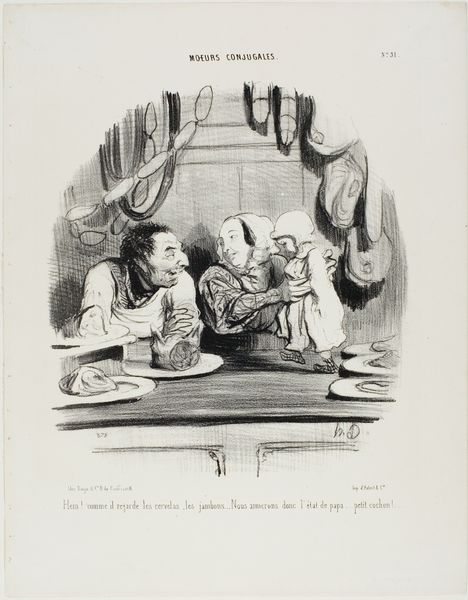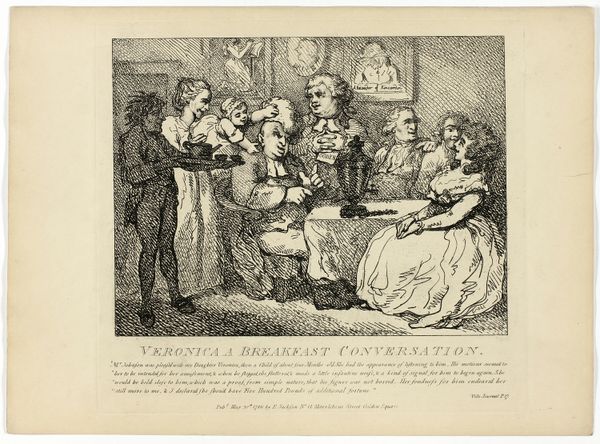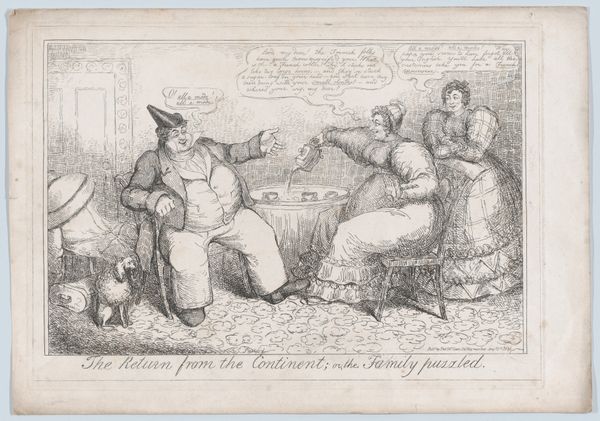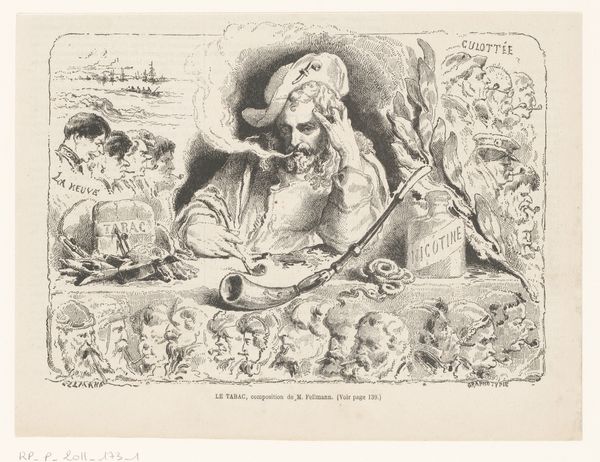
Dimensions: 275 × 380 mm (sheet)
Copyright: Public Domain
Editor: Here we have Thomas Rowlandson’s "Tea, from Boswell's Tour of the Hebrides," an etching on paper created in 1786. It's quite a busy scene, a little chaotic even, depicting a tea party. What strikes me is how much is communicated about social dynamics just through the body language of these figures. What do you see in this piece, especially considering its historical context? Curator: What jumps out to me is the explicit rendering of class through material culture and the act of consumption. Consider the tools for producing and serving tea – the fine china, the sugar, even the very architecture of the room, contrasted with the visible labor implicit in the yawning servant at the back. How does Rowlandson use line and form to subtly satirize the rituals of the leisure class? Editor: I hadn't thought about it like that, seeing the consumption itself as labor of a different sort. So, the figures' poses aren't just about social dynamics but about the larger system? Curator: Precisely. Think about where the raw materials for that tea originated – likely extracted through colonial labor. The artist isn’t just portraying a scene; they’re revealing a whole network of production and exploitation embedded in something as commonplace as a tea party. The etching medium itself becomes relevant; consider the labor and skill required to create these repeatable images for mass consumption. Editor: So, the very process of creating and circulating the image reflects a material reality of the time? It makes me rethink what seems at first like just a funny genre scene. Curator: Exactly! By paying attention to materials, techniques, and the socio-economic context, we gain a deeper insight into the work. The act of drinking tea is then laden with these unseen labors and histories, isn't it? Editor: Absolutely. I will never look at a genre scene in quite the same way! Curator: Nor will I. Examining Rowlandson’s methods here prompts us to reflect on how material conditions underpin even seemingly simple representations of everyday life.
Comments
No comments
Be the first to comment and join the conversation on the ultimate creative platform.
